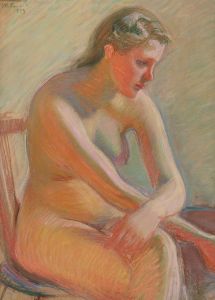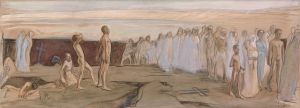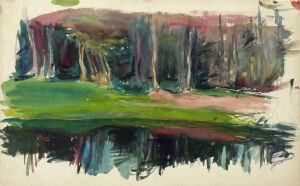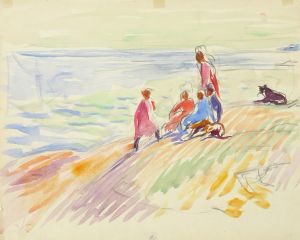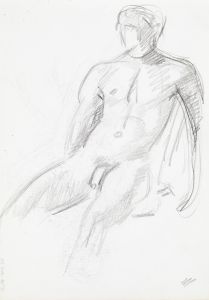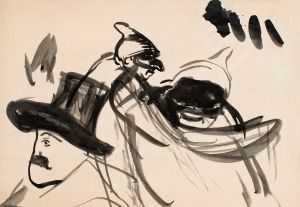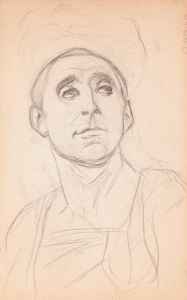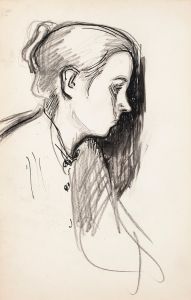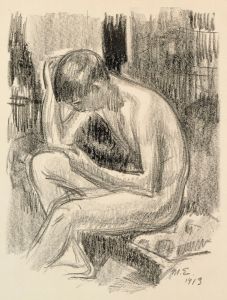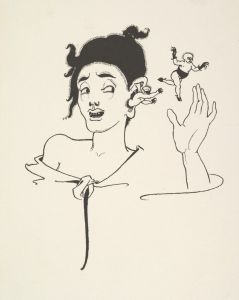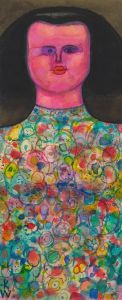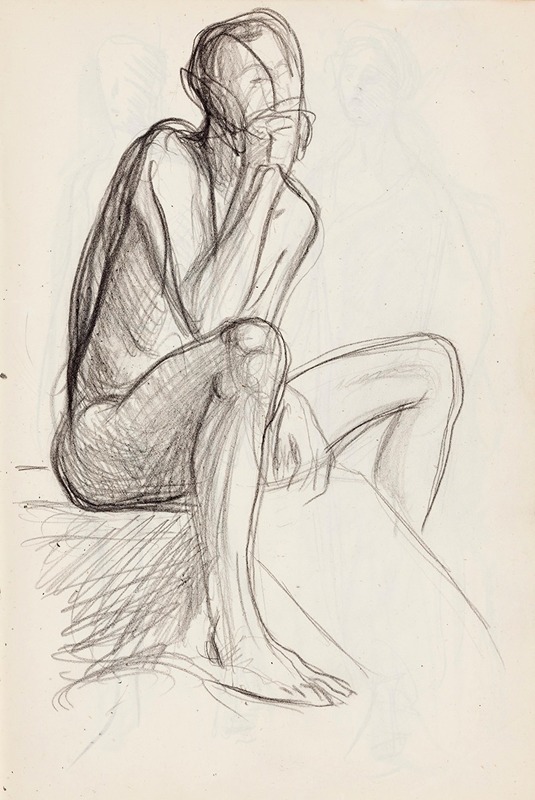
Istuva alaston mies, luonnos
A hand-painted replica of Magnus Enckell’s masterpiece Istuva alaston mies, luonnos, meticulously crafted by professional artists to capture the true essence of the original. Each piece is created with museum-quality canvas and rare mineral pigments, carefully painted by experienced artists with delicate brushstrokes and rich, layered colors to perfectly recreate the texture of the original artwork. Unlike machine-printed reproductions, this hand-painted version brings the painting to life, infused with the artist’s emotions and skill in every stroke. Whether for personal collection or home decoration, it instantly elevates the artistic atmosphere of any space.
Magnus Enckell's Istuva alaston mies, luonnos (translated as Seated Nude Man, Sketch) is a work by the Finnish symbolist painter Magnus Enckell (1870–1925). Enckell is recognized as one of Finland's most prominent artists of the late 19th and early 20th centuries, known for his contributions to Symbolism and his exploration of themes such as human emotion, spirituality, and the human form.
This particular piece, Istuva alaston mies, luonnos, is a sketch that depicts a seated nude male figure. As the title suggests, it is a preparatory work or study, rather than a finished painting. Enckell often created sketches and studies as part of his artistic process, using them to explore composition, anatomy, and the interplay of light and shadow. The work reflects his interest in the human body as a subject, a recurring theme in his oeuvre. Enckell's treatment of the nude figure is characterized by a focus on simplicity, balance, and introspection, aligning with the Symbolist movement's emphasis on inner meaning and emotional resonance.
Magnus Enckell was a central figure in Finnish art during his time, and his works often bridged the transition from the late Romanticism of the 19th century to the modernist movements of the early 20th century. He studied at the Finnish Art Society's Drawing School in Helsinki and later continued his education in Paris, where he was influenced by Symbolist artists and the broader European art scene. His works frequently feature subdued color palettes and a contemplative atmosphere, reflecting his interest in exploring the spiritual and psychological dimensions of his subjects.
While specific details about the creation date or context of Istuva alaston mies, luonnos are not widely documented, it is consistent with Enckell's broader body of work, which often included studies of the male form. These studies were not only exercises in technical skill but also expressions of his artistic philosophy, which sought to capture the essence of human existence through form and composition.
Enckell's legacy in Finnish art is significant, and his works are held in high regard for their contribution to the development of modern art in Finland. Many of his pieces, including sketches like Istuva alaston mies, luonnos, are housed in Finnish museums and collections, where they continue to be studied and appreciated for their artistic and historical value.






